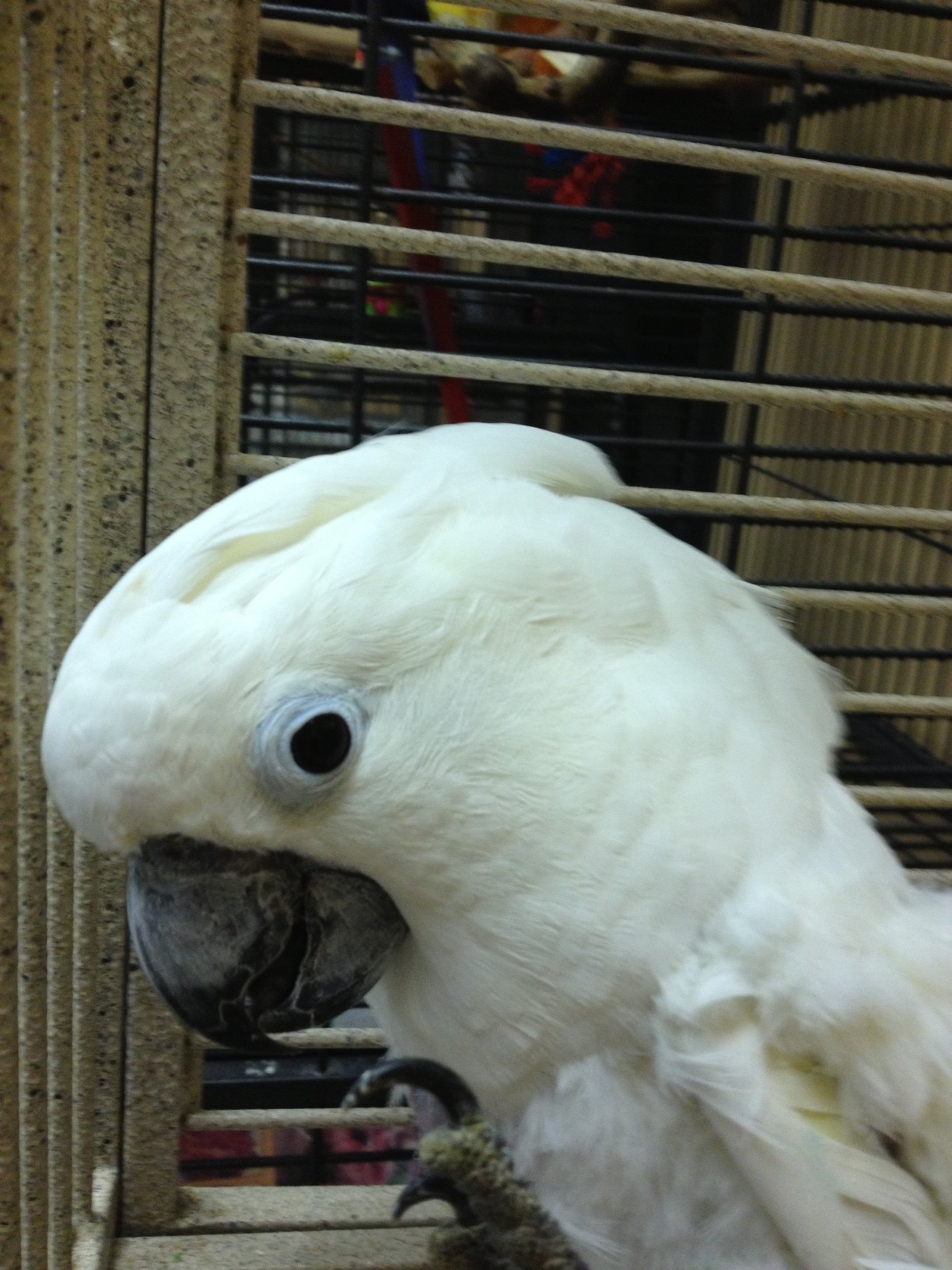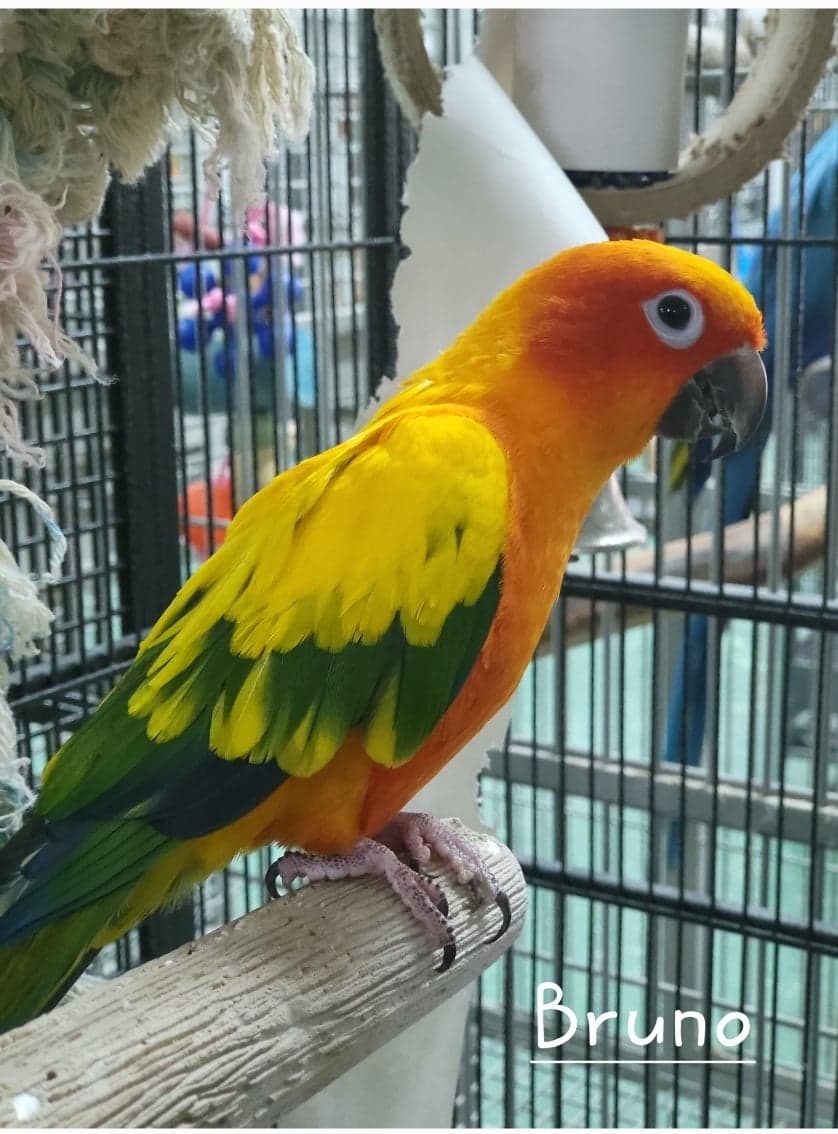So many times I see the statement, “don’t cuddle your Cockatoo” followed by all different kinds of reasons. I feel really bad for the Cockatoos whose owners blindly follow this advice. Blanket statements like this can sometimes cause more harm than good.
Imagine being a Cockatoo whose human cuddles him in their arms or under the blanket. They may play peek-a-boo with the blanket. Maybe he lays on his humans chest while being preened or just being scritched. If he’s like my U2 then he loves being scritched under the wing. I have cuddled and scritched my U2 and M2 since the day they came home with me. As I write this, they are both at my side on a play stand. Peaches, M2, is not really a heavy cuddler though he has his moments. Baby, U2 is a tee totaler when it comes to cuddling. These 2 have been with me for 16 yrs., Baby has laid 1 egg in all that time. I was giving them cardboard boxes to play with. I got a really box one day and not thinking about the time of year, gave it to the Too’s. Unfortunately, the box was big enough for Miss Baby to get all the way inside it. The box quickly became a nest. I took away the box but the damage had already been done. Baby laid an egg a couple of days after the box was removed. She laid it from the perch apparently because it was broken on the grate. Another egg never followed.
Now, imagine that one day your human suddenly stops cuddling you and scratching you. You try to snuggle up only to be put on a play stand or back on a hand. You desperately want to be close to your human but for some reason they just keep moving you away. You wiggle under blankets, looking cute the entire time and begging to play peek-a-boo, only to have the blanket removed from your reach. You just cannot imagine what you have done to displease your human so much that they no longer want you close. You try your best for a snuggle, looking cute , begging and doing everything in your power to resume the closeness you once felt with your human. Eventually you give up and become very sad. Since your human no longer preens your neck or scratches under your wings you work on your own feathers. maybe if you mess them up enough then your human will do it for you once again. Eventually you preen your feathers so much that they are broken or destroyed, when that doesn’t work you just begin to pull them out.
This is a bit of an extreme example but you get the point. There is, in my opinion, absolutely no reason that a bird without hormonal issues should not get their cuddles, even a Cockatoo! There are things to watch for and not encourage when cuddling your companion. If he/she begins to masturbate on any part of your body then cuddles need to cease temporarily. If your companion begins to regurgitate food for you then it’s time to rethink how and where you are touching your bird. Each bird is an individual and should be consider as such. While I can hug and cuddle my U2 without a problem, we have a female U2 in rescue that cannot be cuddled this way. She is extremely hormonal and cuddling will only increase this response. She will hunker down, spread her wings slightly and begin panting, all signs of sexual stimulation. Bonnie has had a prolapse that had to be surgically repaired. Hormone injections were not a solution or help for her. She is separated from the other Cockatoos to try reduce stimulation. We must be alert to her behaviors and body language, especially during breeding season when she is at her peak of hormones. She gets top of the head scratches but nowhere else on her body is scratched. She gets more play stand time rather than sitting on a lap. Nothing that resembles nesting material is given to her, shredding toys are not provided.
In the end, it all comes down to realizing your bird is an individual and knowing your bird. What works for one bird, may not work for another. What stimulates one bird, may not stimulate your bird. Please, unless there is a valid reason, don’t drastically change how you love on your bird based on someone else’s problems with their own bird. Find and maintain what works with you and your bird. Make adjustments during breeding season if you see untoward behavior related to cuddling. Most of all, love your bird and let them love you.




